Population-based interventions for preventing falls and fall-related injuries in older people
- PMID: 38180112
- PMCID: PMC10767771
- DOI: 10.1002/14651858.CD013789.pub2
Population-based interventions for preventing falls and fall-related injuries in older people
Abstract
Background: Around one-third of older adults aged 65 years or older who live in the community fall each year. Interventions to prevent falls can be designed to target the whole community, rather than selected individuals. These population-level interventions may be facilitated by different healthcare, social care, and community-level agencies. They aim to tackle the determinants that lead to risk of falling in older people, and include components such as community-wide polices for vitamin D supplementation for older adults, reducing fall hazards in the community or people's homes, or providing public health information or implementation of public health programmes that reduce fall risk (e.g. low-cost or free gym membership for older adults to encourage increased physical activity).
Objectives: To review and synthesise the current evidence on the effects of population-based interventions for preventing falls and fall-related injuries in older people. We defined population-based interventions as community-wide initiatives to change the underlying societal, cultural, or environmental conditions increasing the risk of falling.
Search methods: We searched CENTRAL, MEDLINE, Embase, three other databases, and two trials registers in December 2020, and conducted a top-up search of CENTRAL, MEDLINE, and Embase in January 2023.
Selection criteria: We included randomised controlled trials (RCTs), cluster RCTs, trials with stepped-wedge designs, and controlled non-randomised studies evaluating population-level interventions for preventing falls and fall-related injuries in adults ≥ 60 years of age. Population-based interventions target entire communities. We excluded studies only targeting people at high risk of falling or with specific comorbidities, or residents living in institutionalised settings.
Data collection and analysis: We used standard methodological procedures expected by Cochrane, and used GRADE to assess the certainty of the evidence. We prioritised seven outcomes: rate of falls, number of fallers, number of people experiencing one or more fall-related injuries, number of people experiencing one or more fall-related fracture, number of people requiring hospital admission for one or more falls, adverse events, and economic analysis of interventions. Other outcomes of interest were: number of people experiencing one or more falls requiring medical attention, health-related quality of life, fall-related mortality, and concerns about falling.
Main results: We included nine studies: two cluster RCTs and seven non-randomised trials (of which five were controlled before-and-after studies (CBAs), and two were controlled interrupted time series (CITS)). The numbers of older adults in intervention and control regions ranged from 1200 to 137,000 older residents in seven studies. The other two studies reported only total population size rather than numbers of older adults (67,300 and 172,500 residents). Most studies used hospital record systems to collect outcome data, but three only used questionnaire data in a random sample of residents; one study used both methods of data collection. The studies lasted between 14 months and eight years. We used Prevention of Falls Network Europe (ProFaNE) taxonomy to classify the types of interventions. All studies evaluated multicomponent falls prevention interventions. One study (n = 4542) also included a medication and nutrition intervention. We did not pool data owing to lack of consistency in study designs. Medication or nutrition Older people in the intervention area were offered free-of-charge daily supplements of calcium carbonate and vitamin D3. Although female residents exposed to this falls prevention programme had fewer fall-related hospital admissions (with no evidence of a difference for male residents) compared to a control area, we were unsure of this finding because the certainty of evidence was very low. This cluster RCT included high and unclear risks of bias in several domains, and we could not determine levels of imprecision in the effect estimate reported by study authors. Because this evidence is of very low certainty, we have not included quantitative results here. This study reported none of our other review outcomes. Multicomponent interventions Types of interventions included components of exercise, environment modification (home; community; public spaces), staff training, and knowledge and education. Studies included some or all of these components in their programme design. The effectiveness of multicomponent falls prevention interventions for all reported outcomes is uncertain. The two cluster RCTs included high or unclear risk of bias, and we had no reasons to upgrade the certainty of evidence from the non-randomised trial designs (which started as low-certainty evidence). We also noted possible imprecision in some effect estimates and inconsistent findings between studies. Given the very low-certainty evidence for all outcomes, we have not reported quantitative findings here. One cluster RCT reported lower rates of falls in the intervention area than the control area, with fewer people in the intervention area having one or more falls and fall-related injuries, but with little or no difference in the number of people having one or more fall-related fractures. In another cluster RCT (a multi-arm study), study authors reported no evidence of a difference in the number of female or male residents with falls leading to hospital admission after either a multicomponent intervention ("environmental and health programme") or a combination of this programme and the calcium and vitamin D3 programme (above). One CBA reported no difference in rate of falls between intervention and control group areas, and another CBA reported no difference in rate of falls inside or outside the home. Two CBAs found no evidence of a difference in the number of fallers, and another CBA found no evidence of a difference in fall-related injuries. One CITS found no evidence of a difference in the number of people having one or more fall-related fractures. No studies reported adverse events.
Authors' conclusions: Given the very low-certainty evidence, we are unsure whether population-based multicomponent or nutrition and medication interventions are effective at reducing falls and fall-related injuries in older adults. Methodologically robust cluster RCTs with sufficiently large communities and numbers of clusters are needed. Establishing a rate of sampling for population-based studies would help in determining the size of communities to include. Interventions should be described in detail to allow investigation of effectiveness of individual components of multicomponent interventions; using the ProFaNE taxonomy for this would improve consistency between studies.
Copyright © 2024 The Authors. Cochrane Database of Systematic Reviews published by John Wiley & Sons, Ltd. on behalf of The Cochrane Collaboration.
Conflict of interest statement
SL is a former Deputy Co‐ordinating Editor of the Cochrane Bone, Joint and Muscle Trauma Group; she was not involved in the editorial process for this review, and has declared that she has no conflict of interest.
LM is a member of the Fear of Falling group for the World Guidelines for Falls Prevention and Management.
MP has declared that they have no conflict of interest.
AB has declared that they have no conflict of interest.
YY has declared that they have no conflict of interest.
AG has declared that they have no conflict of interest.
JS has declared that they have no conflict of interest.
EB has declared that they have no conflict of interest.
MG has declared that they have no conflict of interest.
AS has declared that they have no conflict of interest.
KR is Medical Director in the Department of Clinical Gerontology, Robert‐Bosch Hospital, Stuttgart, Germany. KR reports consultancy fees and other fees from Amgen Independent Contractor; personal payment.
DM is a Consultant in Public Health with West Sussex County Council. They are also a member of a steering group of the National Falls Prevention Coordination Group.
RM reports employment at Health Decision Support; personal payment. RM reports ownership of stocks in Ramsay Health Care Ltd; personal payment.
CT reports receipt of grants from the National Institute for Health Research and the World Health Organization. CT also reports that he has a fiduciary role within Public Health England and the Task Force of Global Guidelines for Falls in Older People.
Figures
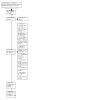

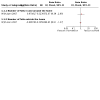
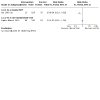
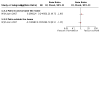



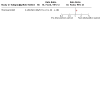
Update of
References
References to studies included in this review
Kempton 2000 {published data only}
-
- Beard J, Rowell D, Scott D, Beurden E, Barnett L, Hughes K, et al. Economic analysis of a community-based falls prevention program. Journal of the Royal Institute of Public Health 2006;120:742-51. - PubMed
-
- Garner E, Kempton A, Beurden E. Strategies to prevent falls: the Stay on Your Feet program. Health Promotion Journal of Australia 1996;6:37-43.
-
- Kempton A, Beurden E, Sladden T, Garner E, Beard J. Older people can stay on their feet: final results of a community-based falls prevention programme. Health Promotion International 2000;15(1):27-33.
-
- Beurden E, Kempton A, Sladden T, Garner E. Designing an evaluation for a multiple-strategy community intervention: the North Coast Stay on Your Feet program. Australian and New Zealand Journal of Public Health 1998;22:115-19. - PubMed
Larsen 2005 {published data only}
-
- Larsen ER, Mosekilde L, Foldspang A. Vitamin D and calcium supplementation prevents severe falls in elderly community-dwelling women: a pragmatic population-based 3-year intervention study. Aging Clinical Experimental Research 2005;17(2):125-32. - PubMed
Lindqvist 2001 {published data only}
-
- Lindqvist KT, Timpka T, Schelp L. Evaluation of an inter-organizational prevention program against injuries among the elderly in a WHO Safe Community. Public Health 2001;115(5):308-16. [PMID: ] - PubMed
Poulstrup 2000 {published data only}
-
- Poulstrup A, Jeune B. Prevention of fall injuries requiring hospital treatment among community-dwelling elderly. European Journal of Public Health 2000;10(1):45-50.
Pujiula Blanch 2010 {published data only}
-
- Pujiula Blanch M, Sabaté MQ, Revuelta EA, Blanes RR, Monfort RC, Grupo APOC ABS Salt. Final results of a multifactorial and community intervention study for the prevention of falls in the elderly [Resultados finales de un estudio de intervención multifactorial y comunitario para la prevención de caídas en ancianos]. Atención Primaria 2010;42(4):211-7. [DOI: 10.1016/j.aprim.2009.07.004] - DOI - PMC - PubMed
-
- Pujiula Blanch M, Grupo APOC ABS Salt. Effectiveness of a multifactorial intervention to prevent falls among elderly people in a community [Efectividad de una intervención multifactorial para la prevención de las caídas en ancianos de una comunidad]. Atención Primaria 2001;28(6):431-6. - PMC - PubMed
Svanström 1996 {published data only}
-
- Schelp L, Svanström L. One-year incidence of occupational accidents in a rural Swedish municipality. Scandinavian Journal of Social Medicine 1986;14:197-204. - PubMed
-
- Schelp L. Community intervention and changes in accident pattern in a rural Swedish municipality. Health Promotion 1987;2(2):109-25.
-
- Schelp L. The role of organizations in community participation – prevention of accidental injuries in a rural Swedish municipality. Social Science Medicine 1988;26(11):1087-93. - PubMed
-
- Svanström L, Ader M, Schelp L, Lindstrom A. Preventing femoral fractures among elderly: the community safety approach. Safety Science 1996;21(3):239-46.
Wijlhuizen 2007 {published data only}
-
- Wijlhuizen GJ, du Bois P, Dommelen P, Hopman-Rock M. Effect evaluation of a multifactor community intervention to reduce falls among older persons. International Journal of Injury Control and Safety Promotion 2007;14(1):25-33. - PubMed
Xia 2009 {published data only}
Ytterstad 1996 {published data only}
References to studies excluded from this review
Barker 2016 {published data only}
Bruce 2016 {published data only}
-
- Bruce J, Lall R, Withers EJ, Finnegan S, Underwood M, Hulme C, et al. A cluster randomised controlled trial of advice, exercise or multifactorial assessment to prevent falls and fractures in community-dwelling older adults: protocol for the prevention of falls injury trial (PreFIT). BMJ 2016;6:e009362. [DOI: 10.1136/ bmjopen-2015-009362] - PMC - PubMed
Clegg 2018 {published data only}
-
- Clegg A, Piernik-Yoder B. Assessing outcomes and falls-risk reduction for homebound older adults through a home evaluation intervention. The American Journal of Occupational Therapy 2018;72:1.
Guse 2015 {published data only}
Iliffe 2014 {published data only}
-
- Iliffe S, Kendrick D, Morris R, Masud T, Gage H, Skelton D, et al. Multicentre cluster randomised trial comparing a community group exercise programme and home-based exercise with usual care for people aged 65 years and over in primary care. Health Technology Assessment 2014;18(49):vii-xxvii, 1. - PMC - PubMed
Johnston 2019 {published data only}
Le Boff 2020 {published data only}
-
- Le Boff M, Chou S, Murata E, Cook M, Mora S, Lee IM, et al. Effects of vitamin D on the risk of falls in the Vitamin D and OmegA-3 TriaL (VITAL). Journal of Bone and Mineral Research 2019;34(1):19.
Lin 2006 {published data only}
-
- Lin MR, Hwang HF, Wang YW, Chang SH, Wolf SL. Community-based tai chi and its effect on injurious falls, balance, gait, and fear of falling in older people. Physical Therapy 2006;86(9):1189-201. - PubMed
Mazza 2021 {published data only}
-
- Mazza NZ, Bailey E, Lanou AJ, Miller N. A statewide approach to falls prevention: widespread implementation of A Matter of Balance in North Carolina, 2014-2019. Journal of Applied Gerontology 2021;40(11):1447-54. [PMID: ] - PubMed
Paul 2021 {published data only}
-
- Paul SS, Li Q, Harvey L, Carroll T, Priddis A, Tiedemann A, et al. Scale-up of the Stepping On fall prevention program amongst older adults in NSW: program reach and fall-related health service use. Health Promotion Journal of Australia 2021;32(Suppl 2):391-8. [PMID: ] - PubMed
Rapp 2022 {published data only}
-
- Konnopka C, Büchele G, Rothenbacher D, Roigk P, Rapp K, König HH. Health-economic evaluation of the German Osteporotic Fracture Prevention Program in Rural Areas (OFRA): mobility and falls prevention classes, examination of bone health, and consultation on safety in the living environment. Journal of General Internal Medicine 2023;38:641–7. [PMID: ] - PMC - PubMed
Robson 2003 {published data only}
-
- Robson E, Edwards J, Gallagher E, Baker D. Steady As You Go (SAYGO): a falls-prevention program for seniors living in the community. Canadian Journal on Aging 2003;22(2):207-16.
Scronce 2021 {published data only}
-
- Scronce G, Zhang W, Smith ML, McCulloch KL, Mercer VS. Effectiveness of a novel implementation of the Otago Exercise Program in rural Appalachia. Journal of Geriatric Physical Therapy 2021;44(4):198-209. [PMID: ] - PubMed
References to studies awaiting assessment
Bos 2021 {published data only}
-
- Bos E, Jansen F. Pharmacist helps prevent the elderly from falling due to medication use: healthcare providers create 16 videos with information about fall prevention. Pharmaceutisch Weekblad 2021;156(36):18-9.
References to ongoing studies
Ivers 2020 {published data only}
Additional references
Avenell 2014
Becker 2017
-
- Becker C, Woo J, Todd C. Chapter 50: Falls. In: Michel JB, Beattie BL, Martin F, Walston J, editors(s). Oxford Textbook of Geriatric Medicine. 3rd edition. Oxford: Oxford University Press, 2017. [DOI: 10.1093/med/9780198701590.003.0050] - DOI
Bergen 2016
-
- Bergen G, Stevens MR, Burns ER. Falls and fall injuries among adults aged ≥65 years – United States, 2014. MMWR. Morbidity and Mortality Weekly Report 2016;65:993-8. [PMID: ] - PubMed
Boulton 2020
-
- Boulton E, Kneale D, Stansfield C, Heron P, Sutcliffe K, Hayanga B, et al. Rapid systematic review of systematic reviews: what befriending, social support and low intensity psychosocial interventions, delivered remotely, are effective in reducing social isolation and loneliness among older adults? How do they work? [version 1; peer review: 2 approved with reservations]. F1000Research 2020 2020;9:1368.
Campbell 2010
-
- Campbell AJ, Robertson MC. Comprehensive approach to fall prevention on a national level: New Zealand. Clinics in Geriatric Medicine 2010;26(4):719-31. - PubMed
Campbell 2012
-
- Campbell MK, Piaggio G, Elbourne DR, Altman DG. Consort 2010 statement: extension to cluster randomised trials. BMJ 2012;345:e5661. [PMID: ] - PubMed
Campbell 2018
Campbell 2019
Clemson 2019
Clemson 2023
CONSORT 2010
-
- Equator Network. CONSORT 2010 Statement: updated guidelines for reporting parallel group randomised trials. www.equator-network.org/reporting-guidelines/consort/ (accessed 12 May 2023).
Deandrea 2010
Delbaere 2010
Department of Health and Social Care 2019
-
- Department of Health and Social Care. UK Chief Medical Officers’ physical activity guideline. www.gov.uk/government/publications/physical-activity-guidelines-uk-chief... (accessed 30 March 2020).
Eldridge 2016
-
- Eldridge S, Campbell M, Campbell M, Drahota-Towns A, Giraudeau B, Higgins J, et al. Revised Cochrane risk of bias tool for randomized trials (RoB 2.0): additional considerations for cluster-randomized trials. methods.cochrane.org/risk-bias-2 2016.
Ellmers 2023
-
- Ellmers T, Freiberger E, Hauer K, Hogan D, McGarrigle L, Lim ML, et al, The World Falls Guidelines Working Group on Concerns about Falling. Why should clinical practitioners ask about their patients’ concerns about falling? Age and Ageing 2023;52(4):afad057. [DOI: 10.1093/ageing/afad057] - DOI - PubMed
EPHPP 2010
-
- Effective Public Health Practice Project. Quality assessment tool for quantitative studies. mersc106759181.files.wordpress.com/2018/02/quality-assessment-tool_2010.pdf (accessed 13 March 2023).
EPHPP Quality Assessment Dictionary
-
- Effective Public Health Practice Project (EPHPP). Quality assessment dictionary 2017. mersc106759181.files.wordpress.com/2018/02/qualilty-assessment-dictionar... (accessed 13 March 2023).
Florence 2018
Frieson 2018
Frohlich 2014
Fuller 2012
-
- Fuller D, Potvin L. Context by treatment interactions as the primary object of study in cluster randomized controlled trials of population health interventions. International Journal of Public Health 2012;57(3):633-6. - PubMed
Gillespie 2012
Haines 2018
-
- Haines TP, Hemming K. Stepped-wedge cluster-randomised trials: level of evidence, feasibility and reporting. Journal of Physiotherapy 2018;64(1):63-6. - PubMed
Hawe 2012
Hemming 2018
Higgins 2011
Higgins 2021
-
- Higgins JP, Thomas J, Chandler J, Cumpston M, Li T, Page MJ, Welch VA, editor(s). Cochrane Handbook for Systematic Reviews of Interventions Version 6.2 (updated February 2021). Cochrane, 2021. Available from training.cochrane.org/handbook/archive/v6.2.
Hopewell 2018
-
- Hopewell S, Adedire O, Copsey BJ, Boniface GJ, Sherrington C, Clemson L, et al. Multifactorial and multiple component interventions for preventing falls in older people living in the community. Cochrane Database of Systematic Reviews 2018, Issue 7. Art. No: CD012221. [DOI: 10.1002/14651858.CD012221.pub2] - DOI - PMC - PubMed
Hussey 2007
-
- Hussey MA, Hughes JP. Design and analysis of stepped wedge cluster randomized trials. Contemporary Clinical Trials 2007;28(2):182-91. - PubMed
James 2017
Kelsey 2012
Kempen 2008
Kinney 2004
-
- Kinney JM. Nutritional frailty, sarcopenia and falls in the elderly. Current Opinion in Clinical Nutrition & Metabolic Care 2004;7(1):15. - PubMed
Lamb 2005
-
- Lamb SE, Jørstad-Stein EC, Hauer K, Becker C, Prevention of Falls Network Europe and Outcomes Consensus Group. Development of a common outcome data set for fall injury prevention trials: the Prevention of Falls Network Europe consensus. Journal of the American Geriatrics Society 2005;53(9):1618-22. - PubMed
Lamb 2011
Lefebvre 2019
-
- Lefebvre C, Glanville J, Briscoe S, Littlewood A, Marshall C, Metzendorf MI, et al. Chapter 4: Searching for and selecting studies. In: Higgins JPT, Thomas J, Chandler J, Cumpston M, Li T, Page MJ, et al (editors). In: Cochrane Handbook for Systematic Reviews of Interventions version 6.0 (updated July 2019). Cochrane, 2019. Available from training.cochrane.org/handbook/archive/v6.
McClure 2005
McClure 2010
Moller 1991
-
- Moller J. Community‐based interventions: an emerging dimension of injury control models. Health Promotion Journal of Australia 1991;1:51-4.
Montero‐Odasso 2022
NICE 2013
-
- National Institute for Health and Care Excellence. Falls in older people: assessing risk and prevention (NICE Clinical Guidelines No. 161). www.nice.org.uk/guidance/cg161 (accessed 24 November 2023) 2013. - PubMed
Rapp 2014
Reeves 2017
Review Manager 2020 [Computer program]
-
- Review Manager 5 (RevMan 5). Version 5.4. Copenhagen: The Cochrane Collaboration, 2020.
Rose 1985
-
- Rose G. Sick individuals and sick populations. International Journal of Epidemiology 1985;30:32-8. - PubMed
Rubenstein 2006
-
- Rubenstein LZ. Falls in older people: epidemiology, risk factors and strategies for prevention. Age and Ageing 2006;35(suppl 2):ii37-41. - PubMed
Schwenk 2012
-
- Schwenk M, Lauenroth A, Stock C, Moreno RR, Oster P, McHugh G, et al. Definitions and methods of measuring and reporting on injurious falls in randomised controlled fall prevention trials: a systematic review. BMC Medical Research Methodology 2012;12:50. [DOI: 10.1186/1471-2288-12-50] - DOI - PMC - PubMed
Schünemann 2020
-
- Schünemann HJ, Higgins JP, Vist GE, Glasziou P, Akl EA, Skoetz N, et al. Chapter 14: Completing ‘Summary of findings’ tables and grading the certainty of the evidence. In: Higgins JP, Thomas J, Chandler J, Cumpston M, Li T, Page MJ, et al (editors). Cochrane Handbook for Systematic Reviews of Interventions version 6.1 (updated September 2020). Cochrane, 2020. Available from training.cochrane.org/handbook/archive/v6.1.
Sherrington 2019
Skelton 2005
-
- Skelton DA, Todd CJ. Thoughts on effective falls prevention intervention on a population basis. Journal of Public Health 2005;13(4):196-202.
Smeeth 2002
-
- Smeeth L, Ng ES. Intraclass correlation coefficients for cluster randomized trials in primary care: data from the MRC trial of the assessment and management of older people in the community. Controlled Clinical Trials 2002;23(4):409-21. - PubMed
Uusi‐Rasi 2017
-
- Uusi-Rasi K, Patil R, Karinkanta S, Kannus P, Tokola K, Lamberg-Allardt C, et al. A 2-year follow-up after a 2-year RCT with vitamin D and exercise: effects on falls, injurious falls and physical functioning among older women. Journals of Gerontology. Series A, Biological Sciences and Medical Sciences 2017;72(9):1239-45. - PMC - PubMed
Welmer 2017
-
- Welmer AK, Rizzuto D, Laukka EJ, Johnell K, Fratiglioni L. Cognitive and physical function in relation to the risk of injurious falls in older adults: a population-based study. Journals of Gerontology. Series A, Biological Sciences and Medical Sciences 2017;72(5):669-75. - PubMed
World Health Organization 2007
-
- World Health Organization. WHO global report on falls prevention in older age. extranet.who.int/agefriendlyworld/wp-content/uploads/2014/06/WHo-Global-.... [ISBN: 978924156353 6] [ISSN: 9241563532]
World Health Organization 2021
-
- World Health Organization. Falls: key facts. www.who.int/news-room/fact-sheets/detail/falls 2021.
Yardley 2005
-
- Yardley L, Beyer N, Hauer K, Kempen G, Piot-Ziegler C, Todd C. Development and initial validation of the Falls Efficacy Scale-International (FES-I). Age and Ageing 2005;34(6):614-9. - PubMed
References to other published versions of this review
McGarrigle 2020
Publication types
MeSH terms
Substances
LinkOut - more resources
Full Text Sources
Medical

